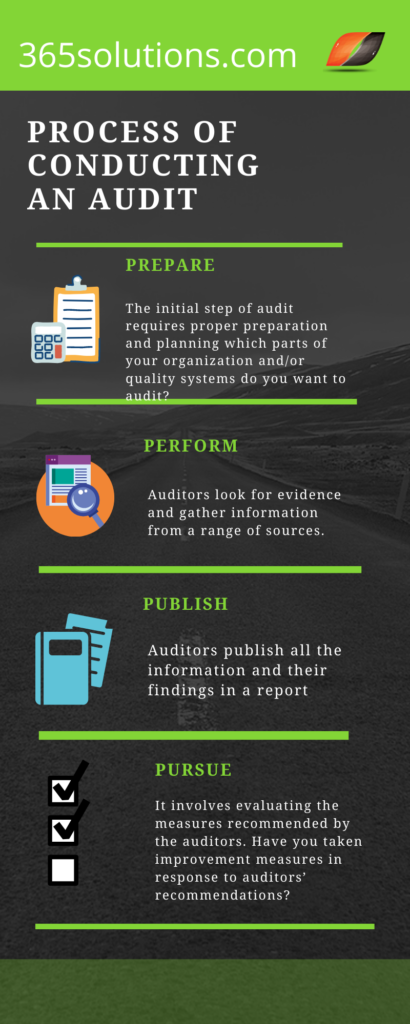It’s the time of the year to maintain financial reports and data collection that comply with laws and regulations. The objective is to identify the flaws within the management that can hamper the functioning. Also, scrutinise the financial reports before presenting them to the external auditors. The audit season is quite stressful and nerve-wracking for those involved. It seems like a miserable phase with extended hours of work, enormous pressure, and a shortage of time.
It feels like a vicious cycle of getting stuck doing more and more paperwork, review and compilation. The more you have to comply with the accounting standards, accreditations, policies, the more it gets complicated with time. Unfortunately, organisations and auditors can’t overlook these prerequisites in the workplace.
Every quarter and year-end, auditors learn the new policies and implement them within the organisation for a seamless transition. Whether we recognise or not, auditors have to be always on their toe working hard day and night. And while they strive to understand every nitty-gritty of their job, as an organisation it’s important to ease their work. You can use multiple practices and tools to help auditors ace their job without stress.
The problem in the Audit process
Most of us are familiar with the audit process. The person in charge prepares the reports on all the things for their respective department. And the other person or group evaluates these reports whether or not they align with the actual data. The objective here is to determine if the pre-audit reports are 100% accurate compared to the post-audit findings. The outcome of most audits is the deviation from the accounting standards rather than complete deviation. Now, if the auditors have done their due diligence to ensure all the reports as per the accounting standards, shouldn’t the audit software do the rest of the task?
Present audit reports in easy to read format
Image Source: Unsplash
The main problem with the asset management software is that even when it helps to track inventory, it doesn’t compile the data beyond the principle stage. The software is so limited in its capacities that it requires the end user to give the command, extract the data, and write them into various reports according to the agency’s demands. It is not just limited to the inefficiency of the software, yet the awful case scenario is that you have to format report templates, present them in an easy to read format. And is a time-consuming process to review the numbers first and then ensure that the data is accurate and presented in an acceptable manner.
Present audit reports in easy to read format
The main problem with the asset management software is that it doesn’t compile the data beyond the principle stage. The software is so limited in its capacities that it requires the end user to give the command, extract the data, and write them into various reports according to the agency’s demands. Users also have to format report templates and present them in an easy to read format. It’s a time-consuming process to review the numbers, ensure that the data is accurate and then present it in an acceptable manner.
But shouldn’t this be the task of asset management software? Though the primary role of software is undoubtedly inventory functions. But, shouldn’t they be more advanced with in-depth functionality that eases the process for the audit?
The cloud-based software should be providing you with all the reports you will need to perform audits. From collection to locating data to summary pages, everything you’ll need to run your audits and review should be available within the software you choose to manage your inventory.
Implementation of policies and standards
Image Source: Unsplash
As discussed, auditors have to abide by many policies and standards. They make these rules applicable within the management functions of the software. But why is the problem not resolved yet? Why is software still inept with this feature?
The problem is that most software vendors lack the expertise and knowledge of the legal aspects required for auditors. They only understand the first threshold of the software, which is inventory management.
Consequently, the cloud service provider should consolidate these functionalities in the software since the rules of operation change with the experience. Your software shouldn’t be inefficient to the point that it can’t deal with the specific needs of your business. The audits explicitly determine how your business carries out at each step, and software should be sufficiently effective to back it.
Conclusion
It is important to have a cloud service provider that streamlines your compliance standards right from the beginning. The system should follow the rules that your organisation comply with and present results in structured reports and data, which you can summarise in audit forms.
Contact 365solutions if you want a trusted partner for cloud, security, data and IT infrastructure. 365 solutions is a reliable partner of Microsoft Cloud partners in the UK, It aids companies in the highly secure migration process and free cloud services to take their business to the next level.
Also Read:
How to boost your sales using smart software?
Role of Business Central and Power BI in Modern Day Business
Discover the Key Advantages of Asset Management





